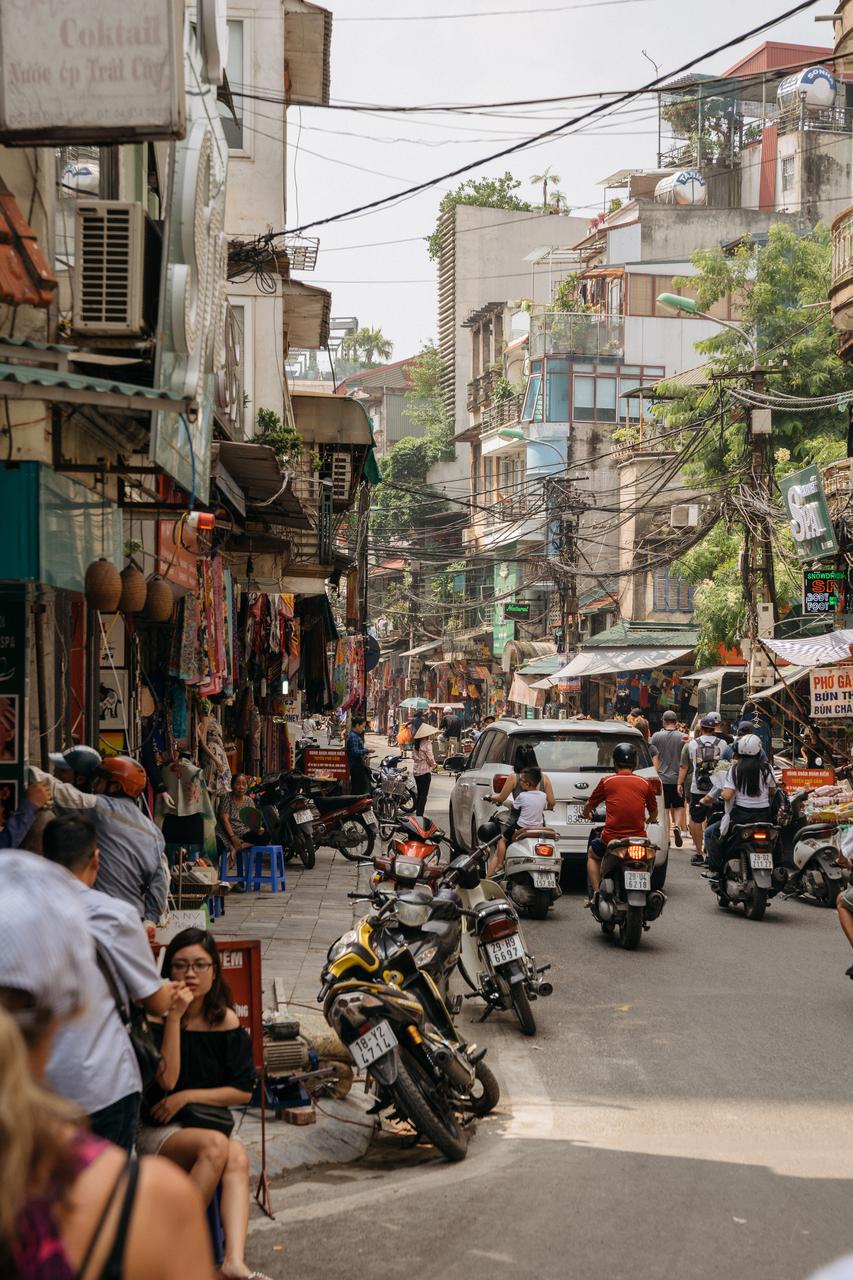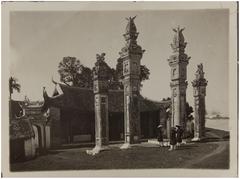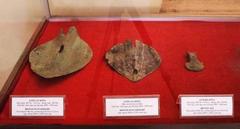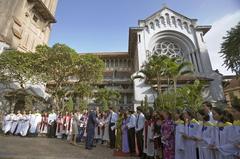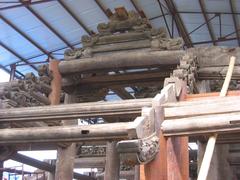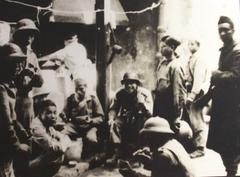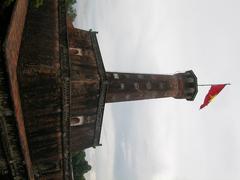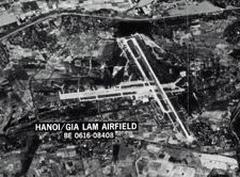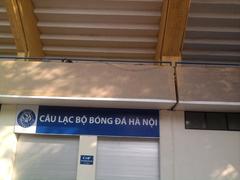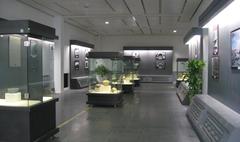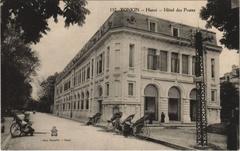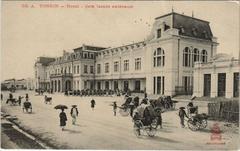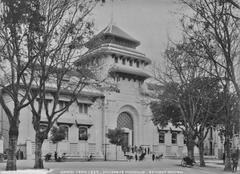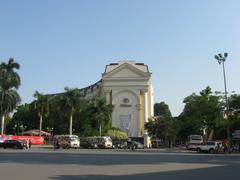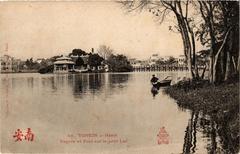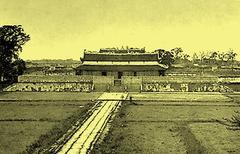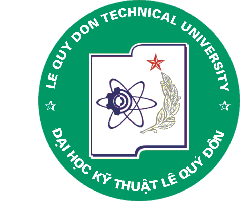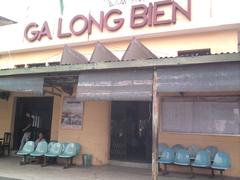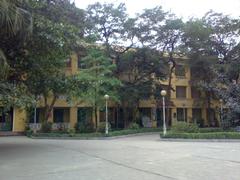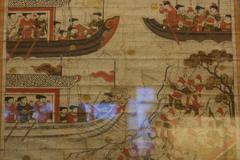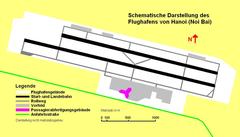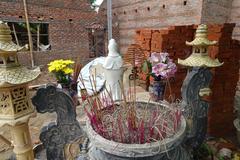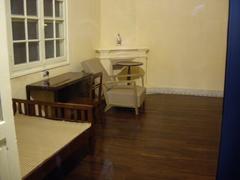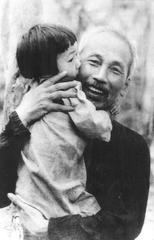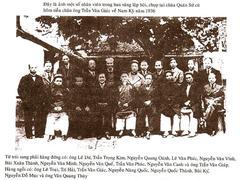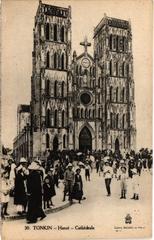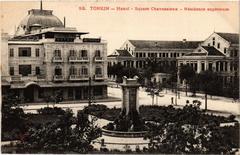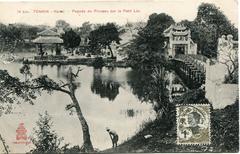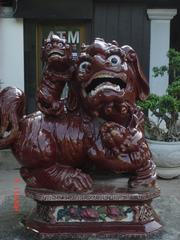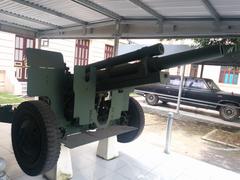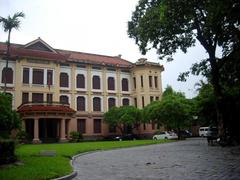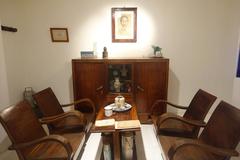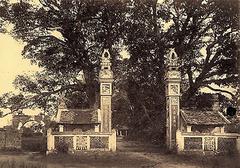Comprehensive Guide to Visiting Hanoi, Vietnam
Date: 13/08/2024
Intriguing Fact About Hanoi
Imagine stepping into a city where dragons ascend from rivers, ancient emperors’ whispers echo alongside the hum of scooters, and each street corner tells a story. Welcome to Hanoi, Vietnam’s heart and soul, a city where history and modernity dance together in a mesmerizing tango. Founded in 1010 by Emperor Lý Thái Tổ, Hanoi, once known as Thăng Long or ‘Ascending Dragon,’ has been a cornerstone of Vietnamese culture and politics for over a millennium (Vietnam Travel). Whether you’re wandering through the labyrinthine alleys of the Old Quarter, where the aroma of street food mingles with the buzz of bustling markets, or marveling at the French colonial architecture that stands as a testament to a bygone era, Hanoi promises an adventure that engages all your senses.
But there’s more to Hanoi than meets the eye. Beyond the iconic sites like Hoan Kiem Lake and the Temple of Literature lie hidden gems waiting to be discovered. Picture yourself sipping Vietnamese coffee in a secluded café tucked away in a narrow alley or standing inches away from a passing train on Hanoi’s famous Train Street. These experiences, both thrilling and serene, define the essence of this dynamic city (Hey Explorer).
Ready to dive into Hanoi’s rich tapestry of history, culture, and modern vibrancy? Whether you’re a history buff, a food enthusiast, or a curious traveler, this comprehensive guide will equip you with everything you need to make your Hanoi adventure unforgettable. From historical insights and cultural etiquette to practical tips and insider secrets, we’ve got you covered. And don’t forget to download Audiala, your ultimate tour guide app, to unlock Hanoi’s hidden stories and treasures. Let’s embark on this journey together!
Table of Contents
- [History of Hanoi](#history-of-hanoihistory-of-hanoi)
- [A City of Dragons and Dreams](#a-city-of-dragons-and-dreamsa-city-of-dragons-and-dreams)
- [Early History and Foundation](#early-history-and-foundationearly-history-and-foundation)
- [French Colonial Period](#french-colonial-periodfrench-colonial-period)
- [Japanese Occupation and the August Revolution](#japanese-occupation-and-the-august-revolutionjapanese-occupation-and-the-august-revolution)
- [First Indochina War and Division](#first-indochina-war-and-divisionfirst-indochina-war-and-division)
- [Vietnam War and Reunification](#vietnam-war-and-reunificationvietnam-war-and-reunification)
- [Post-War Era and Economic Reforms](#post-war-era-and-economic-reformspost-war-era-and-economic-reforms)
- [Contemporary Hanoi](#contemporary-hanoicontemporary-hanoi)
- [Hidden Gems and Local Secrets](#hidden-gems-and-local-secretshidden-gems-and-local-secrets)
- [Key Historical Sites in Hanoi](#key-historical-sites-in-hanoikey-historical-sites-in-hanoi)
- [Key Attractions in Hanoi, Vietnam](#key-attractions-in-hanoi-vietnamkey-attractions-in-hanoi-vietnam)
- [Thang Long Imperial Citadel](#thang-long-imperial-citadelthang-long-imperial-citadel)
- [Ho Chi Minh Mausoleum](#ho-chi-minh-mausoleumho-chi-minh-mausoleum)
- [One Pillar Pagoda](#one-pillar-pagodaone-pillar-pagoda)
- [Hanoi Old Quarter](#hanoi-old-quarterhanoi-old-quarter)
- [Hoan Kiem Lake and Ngoc Son Temple](#hoan-kiem-lake-and-ngoc-son-templehoan-kiem-lake-and-ngoc-son-temple)
- [Temple of Literature](#temple-of-literaturetemple-of-literature)
- [Vietnam National Museum of Fine Arts](#vietnam-national-museum-of-fine-artsvietnam-national-museum-of-fine-arts)
- [Train Street](#train-streettrain-street)
- [St. Joseph’s Cathedral](#st-josephs-cathedralst-josephs-cathedral)
- [Bat Trang Ceramic Village](#bat-trang-ceramic-villagebat-trang-ceramic-village)
- [Perfume Pagoda](#perfume-pagodaperfume-pagoda)
- [West Lake and Truc Bach Lake](#west-lake-and-truc-bach-lakewest-lake-and-truc-bach-lake)
- [Ba Vi National Park](#ba-vi-national-parkba-vi-national-park)
- [Hanoi Opera House](#hanoi-opera-househanoi-opera-house)
- [Hanoi Botanical Garden](#hanoi-botanical-gardenhanoi-botanical-garden)
- [Vietnam National Village for Ethnic Culture and Tourism](#vietnam-national-village-for-ethnic-culture-and-tourismvietnam-national-village-for-ethnic-culture-and-tourism)
- [Cultural Insights](#cultural-insightscultural-insights)
- [Introduction](#introductionintroduction)
- [Historical Significance](#historical-significancehistorical-significance)
- [Traditional Vietnamese Culture](#traditional-vietnamese-culturetraditional-vietnamese-culture)
- [Temples and Religious Sites](#temples-and-religious-sitestemples-and-religious-sites)
- [Modern Cultural Landscape](#modern-cultural-landscapemodern-cultural-landscape)
- [Festivals and Events](#festivals-and-eventsfestivals-and-events)
- [Museums and Cultural Institutions](#museums-and-cultural-institutionsmuseums-and-cultural-institutions)
- [Local Arts and Crafts](#local-arts-and-craftslocal-arts-and-crafts)
- [Culinary Experiences](#culinary-experiencesculinary-experiences)
- [Performing Arts](#performing-artsperforming-arts)
- [Visitor Tips](#visitor-tipsvisitor-tips)
- [Practical Information](#practical-informationpractical-information)
- [Explore Hanoi with Audiala](#explore-hanoi-with-audialaexplore-hanoi-with-audiala)
History of Hanoi
A City of Dragons and Dreams
Imagine a city where ancient dragons rise alongside modern skyscrapers, where every street corner whispers tales of emperors, revolutionaries, and resilience. Welcome to Hanoi, the heart and soul of Vietnam, a city that has danced through time with grace and grit.
Early History and Foundation
Once known as Thăng Long, or “Ascending Dragon,” Hanoi was founded in 1010 by Emperor Lý Thái Tổ. Legend has it that the emperor saw a golden dragon ascending from the Red River, a sign that this would be a place of prosperity and power. With its strategic location along the river, Hanoi quickly became Vietnam’s political and cultural epicenter, a status it maintained for nearly eight centuries.
French Colonial Period
Fast forward to the late 19th century, and Hanoi finds itself under French colonial rule. Picture grand boulevards and European-style buildings juxtaposed with traditional Vietnamese architecture. The French left an indelible mark, introducing Western education, healthcare, and infrastructure. The iconic Hanoi Opera House stands as a testament to this era of transformation.
Japanese Occupation and the August Revolution
World War II brought a new wave of turmoil as Japan occupied Vietnam from 1940 to 1945. The French were allowed to maintain administrative control, but the Việt Minh, led by Ho Chi Minh, saw an opportunity. In August 1945, they launched the “August Revolution,” seizing control of Hanoi. On September 2, 1945, Ho Chi Minh declared Vietnam’s independence, a moment that echoed through history.
First Indochina War and Division
The joy of independence was short-lived as the First Indochina War erupted between the Việt Minh and French forces. The war ended in 1954 with the Geneva Accords, temporarily splitting Vietnam into North and South. Hanoi became the capital of North Vietnam, a city determined to reunify the nation.
Vietnam War and Reunification
Hanoi’s resilience was put to the test during the Vietnam War. As the political and military hub of North Vietnam, the city endured relentless bombing campaigns. Yet, Hanoi stood strong, becoming a symbol of North Vietnamese determination. The war ended with the Fall of Saigon in 1975, leading to the reunification of Vietnam under communist rule. Hanoi was crowned the capital of the unified Socialist Republic of Vietnam in 1976.
Post-War Era and Economic Reforms
Reunification brought its own set of challenges. Vietnam faced economic hardship and international isolation. The centrally planned economy led to stagnation, but in 1986, the Đổi Mới (Renovation) reforms ignited a transformation. Hanoi blossomed into a bustling metropolis, an economic, cultural, and political hub in Southeast Asia.
Contemporary Hanoi
Today, Hanoi is a vibrant tapestry woven from its rich historical threads and modern ambitions. Stroll through the Old Quarter’s narrow streets, where traditional shophouses stand shoulder to shoulder. Explore the French Quarter’s elegant colonial architecture. Modern skyscrapers and shopping malls rise alongside ancient temples and pagodas, reflecting Hanoi’s dynamic evolution.
Hidden Gems and Local Secrets
Beyond the well-trodden paths lie Hanoi’s lesser-known treasures. Discover the hidden cafes tucked away in labyrinthine alleys, where the aroma of Vietnamese coffee mingles with the buzz of scooters. Visit the Long Biên Bridge at sunrise for a breathtaking view and a glimpse into local life. Don’t miss the Train Street, where trains pass just inches from residential buildings—a thrilling experience you won’t forget.
Key Historical Sites in Hanoi
Hoan Kiem Lake and Ngoc Son Temple
Hoan Kiem Lake, the city’s emerald heart, is steeped in legend. Here, Emperor Lê Lợi is said to have returned a magical sword to the Golden Turtle God. Ngoc Son Temple, perched on a small island, honors General Trần Hưng Đạo, a national hero who vanquished the Mongols in the 13th century.
Temple of Literature
Founded in 1070, the Temple of Literature is Vietnam’s first university. Wander through its serene courtyards and pavilions, where stelae bear the names of scholars from centuries past. It’s a place where history and academia converge.
Hoa Lo Prison
Once a grim detention center for Vietnamese political prisoners and American POWs, including Senator John McCain, Hoa Lo Prison (the “Hanoi Hilton”) is now a museum. It offers a sobering glimpse into the harsh conditions endured by its inmates.
Imperial Citadel of Thăng Long
A UNESCO World Heritage Site, the Imperial Citadel of Thăng Long was Vietnam’s political center for over a millennium. Explore the archaeological remains of palaces, gates, and other structures that tell the story of a bygone era.
Hanoi’s Train Street
Experience the thrill of Hanoi’s Train Street, where trains pass within inches of residential buildings. Although access has been restricted for safety, visitors can still view the spectacle from designated areas, capturing the unique atmosphere of this bustling neighborhood.
Visitor Tips for Exploring Hanoi’s History
- Best Time to Visit: The cooler months from October to April are ideal. August can be hot and humid, but it also offers fewer crowds and vibrant cultural events.
- What to Pack: Lightweight clothing, sunscreen, an umbrella or raincoat, and comfortable walking shoes are essential.
- Getting Around: Use a mix of taxis, ride-hailing services, buses, cyclos, and motorbike rentals to explore the city efficiently.
- Staying Hydrated: Carry a reusable water bottle and drink plenty of fluids, especially in the humid months.
Engage with Hanoi’s Vibrant Culture
- Learn the Lingo: Pick up a few Vietnamese phrases like “Xin chào” (Hello) and “Cảm ơn” (Thank you). Locals appreciate the effort!
- Cultural Etiquette: When visiting temples, dress modestly and remove your shoes. A respectful demeanor goes a long way.
By diving into Hanoi’s rich history and embracing these tips, you’ll unlock the city’s unique blend of ancient traditions and modern vibrancy. Ready for an adventure? Use Audiala, your ultimate tour guide app, to discover Hanoi’s hidden gems and create unforgettable memories. Download it now and let the journey begin!
Key Attractions in Hanoi, Vietnam
Thang Long Imperial Citadel
Step into a time machine at the Thang Long Imperial Citadel, a UNESCO World Heritage Site that’s been standing tall since the 11th century. Imagine the whispers of ancient emperors in the air as you wander through palaces, military bunkers, and French colonial buildings. Don’t miss the archaeological digs that reveal layers of history, connecting you to Vietnam’s rich past (Vietnam Travel).
Ho Chi Minh Mausoleum
Think of the Ho Chi Minh Mausoleum as Hanoi’s very own ‘Hall of Fame.’ This iconic gray building is where the revered Ho Chi Minh rests. Located in Ba Dinh Square, the spot where Vietnam’s independence was declared in 1945, it’s a must-visit to pay your respects and dive into the nation’s revolutionary history (Hey Explorer).
One Pillar Pagoda
Just a hop, skip, and a jump from the Ho Chi Minh Mausoleum, you’ll find the architectural marvel that is the One Pillar Pagoda. Standing on a single pillar, this pagoda has been a symbol of Vietnamese ingenuity since 1049. It’s a serene spot for reflection and a must-see for anyone interested in Buddhist architecture (Guide to Hanoi).
Hanoi Old Quarter
Welcome to the beating heart of Hanoi—the Old Quarter. Lose yourself in a labyrinth of narrow streets, bursting with traditional shops, vibrant markets, and the tantalizing aroma of street food. This area is a living museum, with history etched into every brick and stone (Asia Odyssey Travel).
Hoan Kiem Lake and Ngoc Son Temple
In the center of bustling Hanoi, Hoan Kiem Lake offers a tranquil oasis. Cross the charming red bridge to Ngoc Son Temple, dedicated to national hero General Tran Hung Dao. It’s a peaceful retreat where you can soak in the spiritual ambiance and escape the city’s hustle (Vietnam Is Awesome).
Temple of Literature
Step back in time at the Temple of Literature, Vietnam’s first national university founded in 1070. This site is a testament to the country’s scholarly heritage, dedicated to Confucius. Stroll through serene courtyards and gardens, and admire the traditional Vietnamese architecture (Nomadasaurus).
Vietnam National Museum of Fine Arts
Art lovers, rejoice! The Vietnam National Museum of Fine Arts is a treasure trove of the nation’s artistic heritage. From traditional to contemporary works, this museum offers a visual feast that will leave you inspired and enlightened (Guide to Hanoi).
Train Street
Experience the thrill of Hanoi’s Train Street, where trains zoom past just inches from the buildings. This quirky attraction is a photographer’s dream but remember to stay safe and follow guidelines (Guide to Hanoi).
St. Joseph’s Cathedral
Step into a piece of Neo-Gothic splendor at St. Joseph’s Cathedral. Built in 1886, this architectural gem offers a tranquil escape from the city’s hustle. Its stunning stained glass windows and intricate details make it a must-visit (Guide to Hanoi).
Bat Trang Ceramic Village
Get your hands dirty at Bat Trang Ceramic Village, known for its high-quality pottery. Participate in workshops and create your own ceramic masterpiece to take home. It’s a hands-on experience that connects you to Hanoi’s artisanal heritage (Guide to Hanoi).
Perfume Pagoda
Embark on a spiritual journey to the Perfume Pagoda, nestled in the Huong Tich Mountains. This complex of temples and shrines offers breathtaking views and a serene atmosphere, perfect for a day of reflection and exploration (Guide to Hanoi).
West Lake and Truc Bach Lake
Escape the urban grind at West Lake and Truc Bach Lake. These scenic spots are perfect for leisurely strolls, paddle boating, or simply unwinding by the water. Enjoy the vibrant social scene with lakeside cafes and eateries (Guide to Hanoi).
Ba Vi National Park
Nature enthusiasts will love Ba Vi National Park, located just 60 kilometers from Hanoi. Explore lush landscapes, diverse flora, and well-marked hiking trails. The park is an ideal day trip for those seeking a refreshing escape into nature (Guide to Hanoi).
Hanoi Opera House
Experience a touch of French elegance at the Hanoi Opera House. Built in 1911, this stunning building hosts a variety of performances. Even if you’re not catching a show, the architectural beauty alone is worth a visit (Asia Odyssey Travel).
Hanoi Botanical Garden
Find your zen at the Hanoi Botanical Garden, a green haven in the city’s heart. With a variety of plant species, walking paths, and serene ponds, it’s a perfect spot for relaxation and contemplation (Vietnam Is Awesome).
Vietnam National Village for Ethnic Culture and Tourism
Explore Vietnam’s diverse ethnic heritage at this cultural park on Hanoi’s outskirts. With traditional houses, cultural performances, and exhibitions, it offers an immersive experience into the country’s rich tapestry of cultures (Vietnam Is Awesome).
Cultural Insights
Introduction
Welcome to Hanoi’s Old Quarter, a place where time seems to stand still and whispers of a thousand years echo through the bustling streets. Picture this: You step into a realm where ancient temples nestle beside trendy cafes, and the aroma of street food mingles with the sounds of motorbikes zipping by. Intrigued? Let’s dive into the heart of this cultural treasure trove.
Historical Significance
Hanoi’s Old Quarter, with its history spanning over a millennium, is a living museum of Vietnam’s rich past. The area was originally the commercial hub of Hanoi, witnessing the rise and fall of various dynasties and empires. The streets of the Old Quarter are named after the goods that were historically traded there, such as Hang Bac (Silver Street) and Hang Gai (Silk Street), reflecting the area’s mercantile heritage (Mihitravel). The architecture in the Old Quarter is a blend of French colonial buildings, traditional Vietnamese houses, and ancient temples, each narrating tales of different eras.
Traditional Vietnamese Culture
The Old Quarter is a melting pot of Vietnamese culture. The bustling markets are a sensory overload, with vendors selling everything from fresh produce to traditional handicrafts. The Dong Xuan Market, the largest in Hanoi, is a must-visit for those looking to experience local life (Mihitravel). Street food stalls are ubiquitous, offering a taste of traditional Vietnamese cuisine. Dishes like pho, bun cha, and banh mi are not just meals but cultural experiences that reflect the country’s culinary heritage.
Temples and Religious Sites
The Old Quarter is home to several significant religious sites. The Bach Ma Temple, one of the oldest inHanoi, is dedicated to a white horse that, according to legend, guided the construction of the city walls. The Temple of Literature, Vietnam’s first university, is another cultural gem. Founded in 1070, it is dedicated to Confucius and serves as a testament to Vietnam’s long-standing reverence for education and scholarship (Mihitravel).
Modern Cultural Landscape
Despite its ancient roots, the Old Quarter is very much alive and evolving. It remains a vital part of Hanoi’s modern life, serving as a major tourist attraction and a thriving commercial hub. The juxtaposition of old and new is evident in the area’s vibrant nightlife, with traditional water puppet shows at the Thang Long Water Puppet Theatre coexisting alongside contemporary art galleries and trendy cafes (Lost Abroad).
Festivals and Events
Hanoi’s cultural calendar is packed with festivals and events that offer a glimpse into local traditions. The Mid-Autumn Festival, celebrated with lantern parades and mooncakes, is particularly enchanting in the Old Quarter. Another significant event is the Wandering Souls Day, a time when locals pay respects to their ancestors with offerings and prayers (Lost Abroad).
Museums and Cultural Institutions
For those interested in a deeper dive into Vietnamese culture, the Vietnam Museum of Ethnology is a must-visit. Located in the Cau Giay district, the museum showcases the diverse cultures of Vietnam’s 54 ethnic groups through exhibits of traditional clothing, artifacts, and reconstructed village houses (Mihitravel). The Hanoi Opera House, a stunning example of French colonial architecture, hosts performances ranging from traditional Vietnamese music to contemporary ballet.
Local Arts and Crafts
Hanoi is renowned for its traditional crafts, many of which are still practiced in the Old Quarter. Bat Trang Pottery Village, located just outside the city, is famous for its ceramics. Visitors can watch artisans at work and even try their hand at pottery making (Hanoi Explore Travel). The Old Quarter itself is dotted with shops selling lacquerware, silk, and other handicrafts, making it a paradise for souvenir hunters.
Culinary Experiences
Hanoi’s food scene is a reflection of its cultural diversity. The city’s street food is legendary, with vendors serving up dishes that have been perfected over generations. Pho, a noodle soup with a rich broth, is perhaps the most famous, but other must-try dishes include bun cha (grilled pork with noodles) and banh mi (a Vietnamese sandwich). For a unique experience, try egg coffee, a Hanoi specialty that combines strong Vietnamese coffee with a creamy egg yolk mixture (Guide to Hanoi).
Performing Arts
The performing arts are an integral part of Hanoi’s cultural landscape. Water puppetry, a traditional art form that dates back to the 11th century, is performed at the Thang Long Water Puppet Theatre. The shows, which depict scenes from rural life and Vietnamese folklore, are a hit with both locals and tourists (Hanoi Explore Travel). The Hanoi Opera House also offers a range of performances, from classical music to modern dance.
Visitor Tips
To fully appreciate Hanoi’s cultural richness, consider joining a guided tour. Many local tour operators offer themed tours that focus on specific aspects of the city’s culture, such as food, history, or crafts. When visiting religious sites, dress modestly and be respectful of local customs. It’s also a good idea to learn a few basic Vietnamese phrases, as this can enhance your interactions with locals and show your appreciation for their culture (Guide to Hanoi).
Practical Information
Hanoi’s Old Quarter is best explored on foot, but be prepared for the chaotic traffic. Motorbikes are the primary mode of transport, and crossing the street can be an adventure in itself. The best time to visit Hanoi is during the cooler months from October to April, but even in the hotter, more humid months, the city’s cultural attractions make it a worthwhile destination (Hanoi Explore Travel).
In summary, Hanoi’s Old Quarter is a cultural treasure trove that offers a unique blend of history, tradition, and modernity. Whether you’re exploring its ancient temples, sampling its street food, or simply soaking in the atmosphere, the Old Quarter provides a rich and immersive cultural experience. Download Audiala to enhance your journey with expertly crafted audio guides that bring these stories to life.
Explore Hanoi with Audiala
Hanoi is a city that effortlessly weaves the ancient with the contemporary, offering a rich tapestry of experiences that captivate and inspire. From the historical grandeur of the Thang Long Imperial Citadel to the bustling energy of the Old Quarter, every corner of this city tells a story (Mihitravel). The French colonial architecture stands as a reminder of a transformative era, while the vibrant markets and street food stalls reflect the enduring spirit of Vietnamese culture (Asia Odyssey Travel).
As you navigate through Hanoi, you’ll encounter not just its well-known landmarks but also its hidden gems—those lesser-known spots that offer a glimpse into the local way of life. Whether it’s watching the sunrise from the Long Biên Bridge or exploring the artisanal heritage of Bat Trang Ceramic Village, these experiences provide a deeper connection to the city’s soul (Hanoi Explore Travel).
Engaging with Hanoi’s vibrant culture means embracing its festivals, sampling its culinary delights, and participating in its traditional crafts. It’s about understanding the stories behind the monuments and the legends that have shaped this resilient city (Guide to Hanoi). And with Audiala by your side, you’ll have access to expertly crafted audio guides that bring these stories to life, enhancing your exploration with insights and hidden gems that only a local would know.
So, are you ready to unlock the secrets of Hanoi? Download Audiala now and let the journey begin. Discover the dragons and dreams that make Hanoi a city like no other (Lost Abroad).
References
- Vietnam Travel (n.d.). Discover Hanoi’s Six Heritage Sites. source
- Hey Explorer (n.d.). What is Hanoi Known and Famous For? source
- Mihitravel (n.d.). Hanoi Old Quarter. source
- Asia Odyssey Travel (n.d.). Things to Do in Hanoi. source
- Hanoi Explore Travel (n.d.). Hanoi Travel Guide. source
- Guide to Hanoi (n.d.). Best Things to See and Do in Hanoi. source
- Lost Abroad (n.d.). Vietnam in August. source
